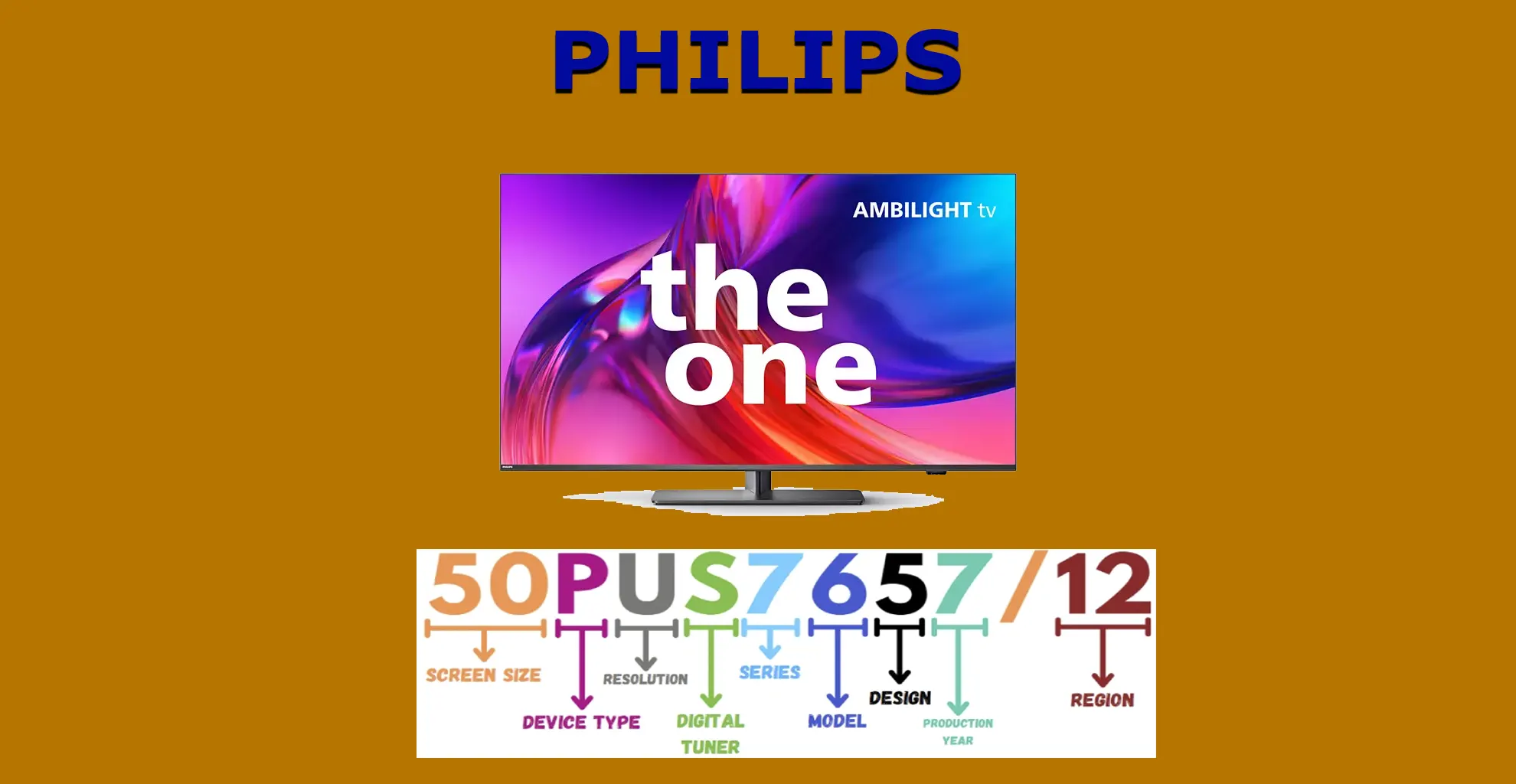If you want to understand the model numbers of Philips TVs, you should know the following. Philips stopped making TVs 2012, and the brand is now licensed to two companies.
- TPV Vision, part of TPV Technology Corporation, makes TVs for Europe, Australia, and Asia.
- Funai, this corporation bought the rights to sell Philips TVs in North America and some Latin American countries.
Despite the transfer of the Philips TV brand to these companies, Philips’ global website retains a uniform representation of the TV models and the TV number structure. Presumably, by licensing the brand, Philips has stipulated conditions that the manufacturing companies are not allowed to create separate websites and are required to maintain a single model number structure. This is also good for TV OEMs and ODMs, especially at the initial licensing stage, as many customers do not know that they are buying a TV that has nothing to do with Philips other than a Philips sticker.
Philips TV model number structure
The TV model number has several blocks in which information about the TV is encoded. Let’s look at model 50PUS7657/12 as an example.

- Size Block: TV screen size in inches.
- Technical characteristics block: screen resolution or other technical characteristics, as well as the type of digital tuner.
- Ranking and design block: This block contains information about the series and models the TV belongs to and design information.
- First release year identification block: model year of release.
- Sales region block: information about which region or country the TV is manufactured for.
How to decode the Philips TV model number
As I said earlier, each block in a Philips TV model number serves a specific purpose, shedding light on the features and specifications of the TV. To help you understand better, let’s break down the model number “50PUS7657/12“:

- 50: Indicates the screen size in inches.
- P: Indicates the type of product, in this case a TV.
- U: Indicates the resolution, where “U” usually means Ultra HD.
- “H“: HD resolution
- “F“: Full HD resolution.
- “U“: UHD.
- “O“: OLED screen.
- “M“: Mini LED screen.
- S: Refers to the type of digital tuner the TV is equipped with.
- “H”: DVB-T/C tuner.
- “K”: DVB-T/C/S/S2.
- “T”: DVB-T/T2/S.
- “S”: DVB-T/T2/C/S/S2 tuner.
- “L”: ATSC tuner (used in the USA and Canada).
- “D”: DTMB tuner for China
- 7: The first number, “7,” represents the series.
- 6: Indicates the model
- 5: Indicates a design option (a design that usually comes down to the shape of the stand).
- 7: The second digit, “7,” in the sequence, indicates the year of production, which in this context corresponds to 2022. I will explain this in more detail below as, as of 2020, the information is different in North America and requires a more detailed explanation.
- /12: The numbers after the slash indicate the specific country or region for which this TV model is intended. 12 means that the TV is made for European countries.
- 12: Europe.
- F7: North America (USA and Canada).
- F8: Mexico.
- 78: for Brazil.
- 77: Argentina.
- T3: China
- 94: India.
- 79: Australia.
- 75: New Zealand.
- 98: Singapore.
- 60: Russia
How do I know what model year your Philips TV is?
The last digit of the model number is the model year, e.g., 50PUS7657/12. In this model, the number 7 before the line is the year identifier. There used to be models that had another letter after the number, for example, 50PUS7657H/12. You need the last digit before the slash; you can ignore the last letter before the slash.
The year of issue is cyclical and repeats every decade.
Here’s how to decipher the year identifier in the model number of a model manufactured by TPV Vision and released by Funai through 2020.
“7”: 2012 or 2022.
“8”: 2013 or 2023.
“9”: 2014 or 2024.
“0”: 2015 or 2025.
“1”: 2016 or 2026.
“2”: 2017 or 2027.
“3”: 2018 or 2028.
“4”: 2019 or 2029.
“5”: 2020 or 2030.
“6”: 2021 or 2031.
Year in the Philips TV lineup for North America: Sales of Philips TVs in North America have been quite volatile, with no new models released in 2019. So, after a break in 2020, Funai resumed sales of TVs and changed the approach to indicate the year of release in the model number. This was logical and made it easier to identify the year, and now the year ID corresponds to the last digit of the year, and the ten-year cycle is retained.
0: 2020
1: 2021
2: 2022
3: 2023
4: 2024
5: 2025






